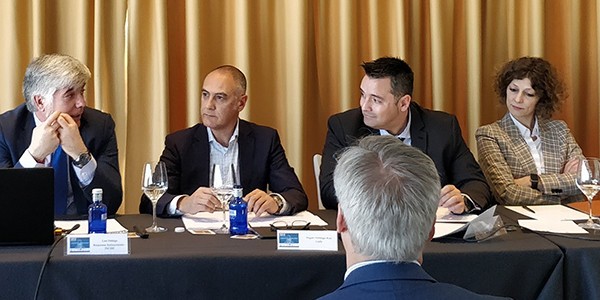The new risks make cybersecurity one of industry’s top priorities

Cybersecurity, coming more into its own day by day, has now become the main risk-combatting scenario of major institutions, both public and private. For this reason the Security Committee of the Spanish Association of Aeronautics, Defense and Space Technology Companies (Asociación Española de Empresas Tecnológicas de Defensa, Aeronáutica y Espacio: TEDAE) is putting on its second one-day Cybersecurity Conference to address the various security issues in our industrial environments. These include the importance of public-private integration in the cybersecurity field; the need of being proactive and stealing a march on hackers and the obligation of raising awareness of the risk situations in carrying out digital transformation initiatives.
The day kicked off with Jaime de Rábago, TEDAE President, describing the current cybersecurity scene, stressing the change driven by industry’s digital transformation as well as interconnectivity and management of the ever-growing volume of information and data. “But at the same time as knowledge is being digitalized, new risks are cropping up, bringing cybersecurity into the foreground as a top priority for all involved companies”.
The first debate then tackled the issue of “Secure Technology Certification and Intelligence”, insisting on the importance of compiling data for subsequent analysis and heading off any events that might occur in the future, impinging directly on business continuity. This procedure is based on the fact that intelligence is drawn from diverse sources and is subsequently analyzed by specialized personnel, after which a report is written and distributed to point out the key action to be taken. Ideally, cyber-threat intelligence skills would consistently provide important, contextualized alerts to trigger proactive and reactive security measures in order to ensure security against any threat. This first debate was chaired by Ricardo Sáenz, GMV’s Defense and Security Program Manager, whose conclusions stressed the need for Spanish industry and government authorities to take an upfront role in the European Commission’s cybersecurity and cyberdefense initiatives.
Are we ready for the integration of IT and OT networks?
The day’s last debate dealt with “IT/OT Convergence in Industrial Cybersecurity” introduced by Luis Hidalgo, Institutional Relations Manager of Spain’s National Cybersecurity Institute (Instituto Nacional de Ciberseguridad: INCIBE). Hidalgo highlighted the cybersecurity expense as an inevitable and necessary investment in the industrial sector. His figures showed that Spanish industry in 2018 suffered a total of 635 incidents in critical operators and 228 vulnerabilities; energy, as the most advanced sector operating with the most automated systems, was the most heavily affected. He also quoted specific cases like the 2018 cyberattack on Barcelona Harbor, which delayed freight deliveries and rendered several servers useless.
This debate, also involving Miguel Hormigo, GMV’s Industry Sector Manager, delved into industry’s current state of IT/OT integration. This convergence is driven mainly by operational-efficiency and cost-cutting motives, with cybersecurity unfortunately being tagged on afterwards. In this scenario the IT world has been tussling with cyber risks for many years, whereas the OT world is starting much further back. Despite this, the truth is that digital transformation initiatives are speeding up this integration and helping to spread further afield a true awareness of the importance of cybersecurity.
“A proper knowledge of the scope, importance and potential advantages is vital when tackling IT/OT convergence in processes, products and services. All too often this is addressed from a position of complete ignorance, whereas risks should be previously planned and managed” argued Hormigo. One of the most important protection measures is across-the-board planning, increasing the awareness and training level of involved actors. It is also essential to carry out a sound system of continuous improvement and to bring in concrete measures, including prevention-, surveillance- and continuity-items and even cryptography solutions wherever necessary.